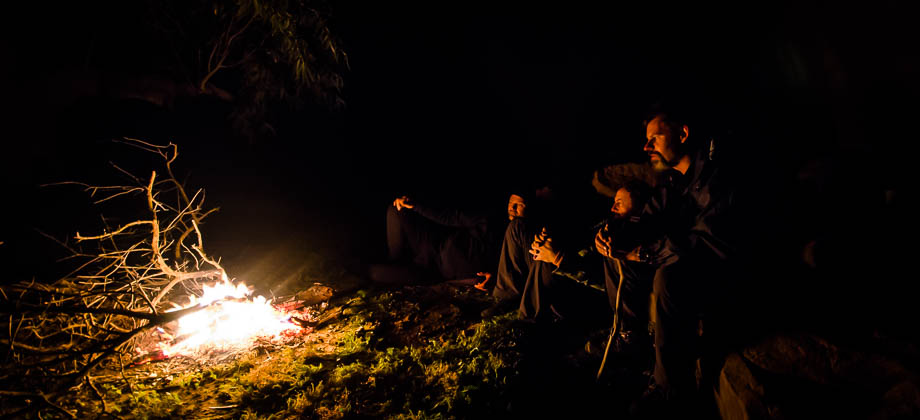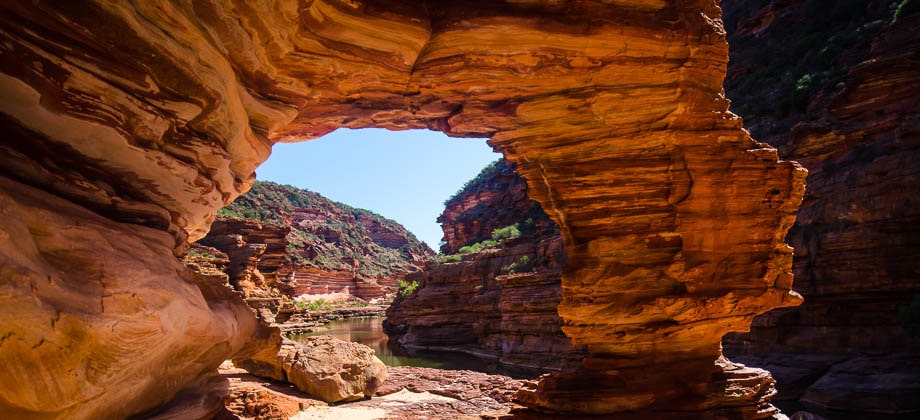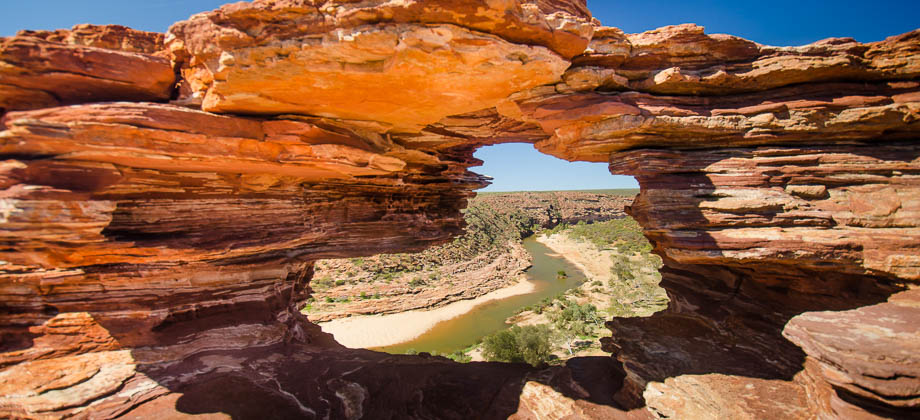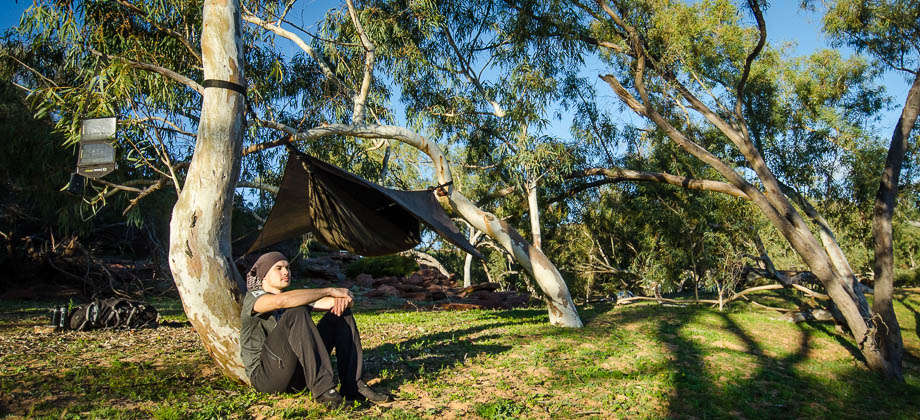Murchison River Gorge - Day 2
Murchison River Gorge Index
Lingering Death
The morbid thoughts of death ended up lingering for a little while longer, for soon after we came upon a tribe, numbering about seven perhaps, of feral goats (Capra aegagrus hircus) that were perched atop the cliff above us and were looking down and bleating. These feral goats have managed to displace the Black-footed Rock Wallaby (Petrogale lateralis) from the area by occupying their shelters and consuming their food sources. There is good news however, as the park authorities currently have plans to reintroduce the Rock Wallaby via a program called 'Western Shield' that involves captive breeding and relocation. As soon as I passed the goats, I noticed the broad wings and the diamond-shaped tail of a Wedge-tail Eagle (Aquila audax) soaring and circling high above. The combination of the two should have made me realise that something was amiss, but I only ended up linking the two events in retrospect. Just as I was rounding a large boulder, I noticed a juvenile goat lying on its side with its neck twisted at an impossible angle, most likely caused by a fall from the cliff above. The goat was making gurgling sounds and was coughing up blood. I considered putting it out of its misery then, but at that stage it would have been dead within minutes. Life is but a wink of eternity...

Star-blazed
 We made another river crossing shortly after but this time we had to wade across the knee-deep green water instead of hopping across from rock to rock. We came across some emu (Dromaius novaehollandiae) tracks on the other side, the middle toe measuring approximately 15cm. Emus are ratites and are the largest birds that are native to Australia, and the size of the tracks left no doubt in my mind that that was most likely true.
We crossed the river again, walking across and along long sections of sand that once again reminded me of portions of the Cape to Cape Track. We came upon an area that had large swaths of flat grass that would make a nice campsite not too long after that, and I was a little glad to be stopping for the day since all the exposure to the sun had left me a little drained.
I spent some time watching the sky that night. The stars were bright, brilliant jewels glittering in the dark, cloudless sky. The Milky Way was also very conspicuous and blazed across the sky to the west, and closer to the horizon were a few planets - both Mars and Saturn - that were about to set. The Delta Aquarids were also close to their peak, and so, in the time of an hour or so, I ended up seeing a total of 13 meteors.
We made another river crossing shortly after but this time we had to wade across the knee-deep green water instead of hopping across from rock to rock. We came across some emu (Dromaius novaehollandiae) tracks on the other side, the middle toe measuring approximately 15cm. Emus are ratites and are the largest birds that are native to Australia, and the size of the tracks left no doubt in my mind that that was most likely true.
We crossed the river again, walking across and along long sections of sand that once again reminded me of portions of the Cape to Cape Track. We came upon an area that had large swaths of flat grass that would make a nice campsite not too long after that, and I was a little glad to be stopping for the day since all the exposure to the sun had left me a little drained.
I spent some time watching the sky that night. The stars were bright, brilliant jewels glittering in the dark, cloudless sky. The Milky Way was also very conspicuous and blazed across the sky to the west, and closer to the horizon were a few planets - both Mars and Saturn - that were about to set. The Delta Aquarids were also close to their peak, and so, in the time of an hour or so, I ended up seeing a total of 13 meteors.


Route Playback












































